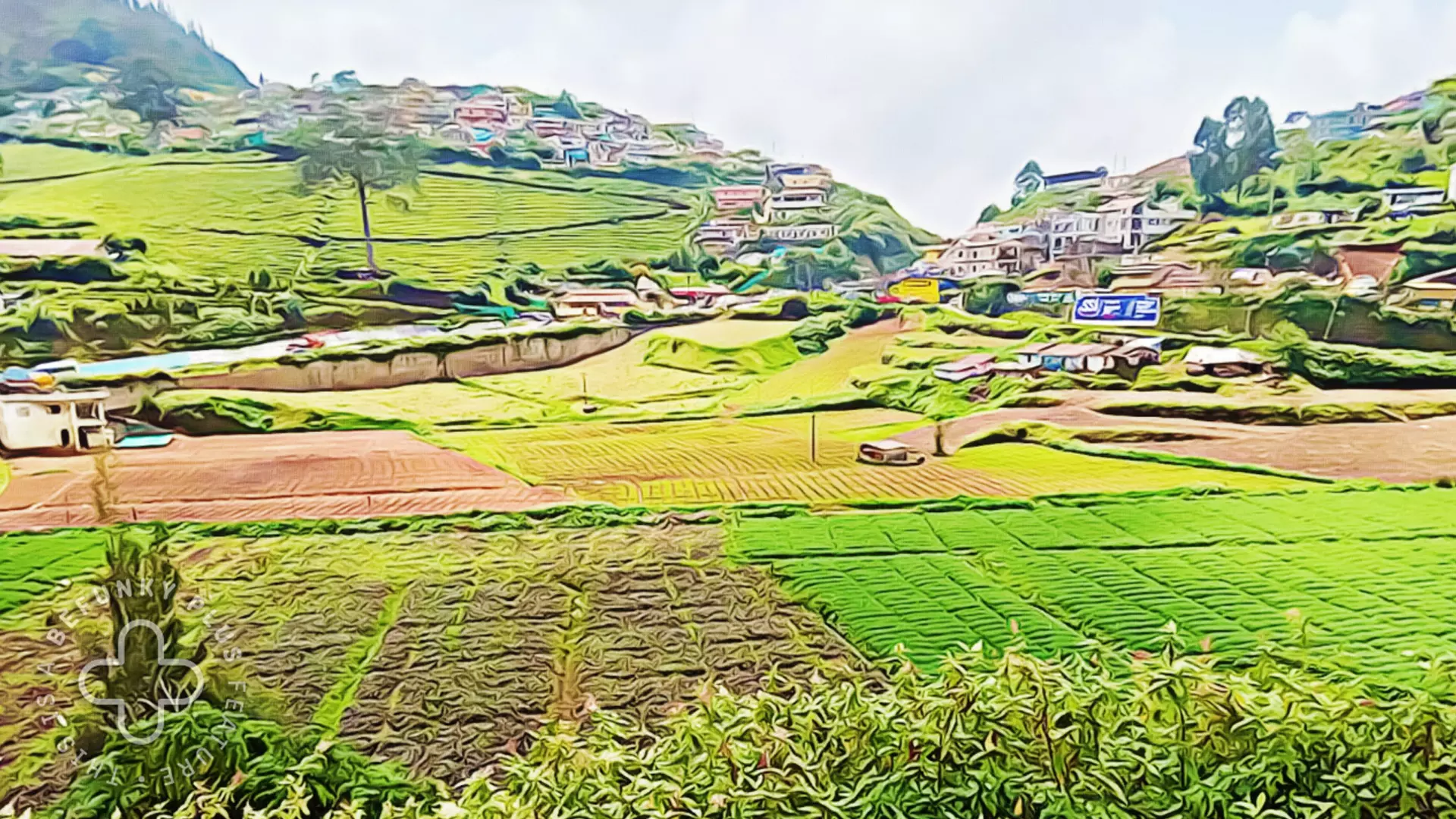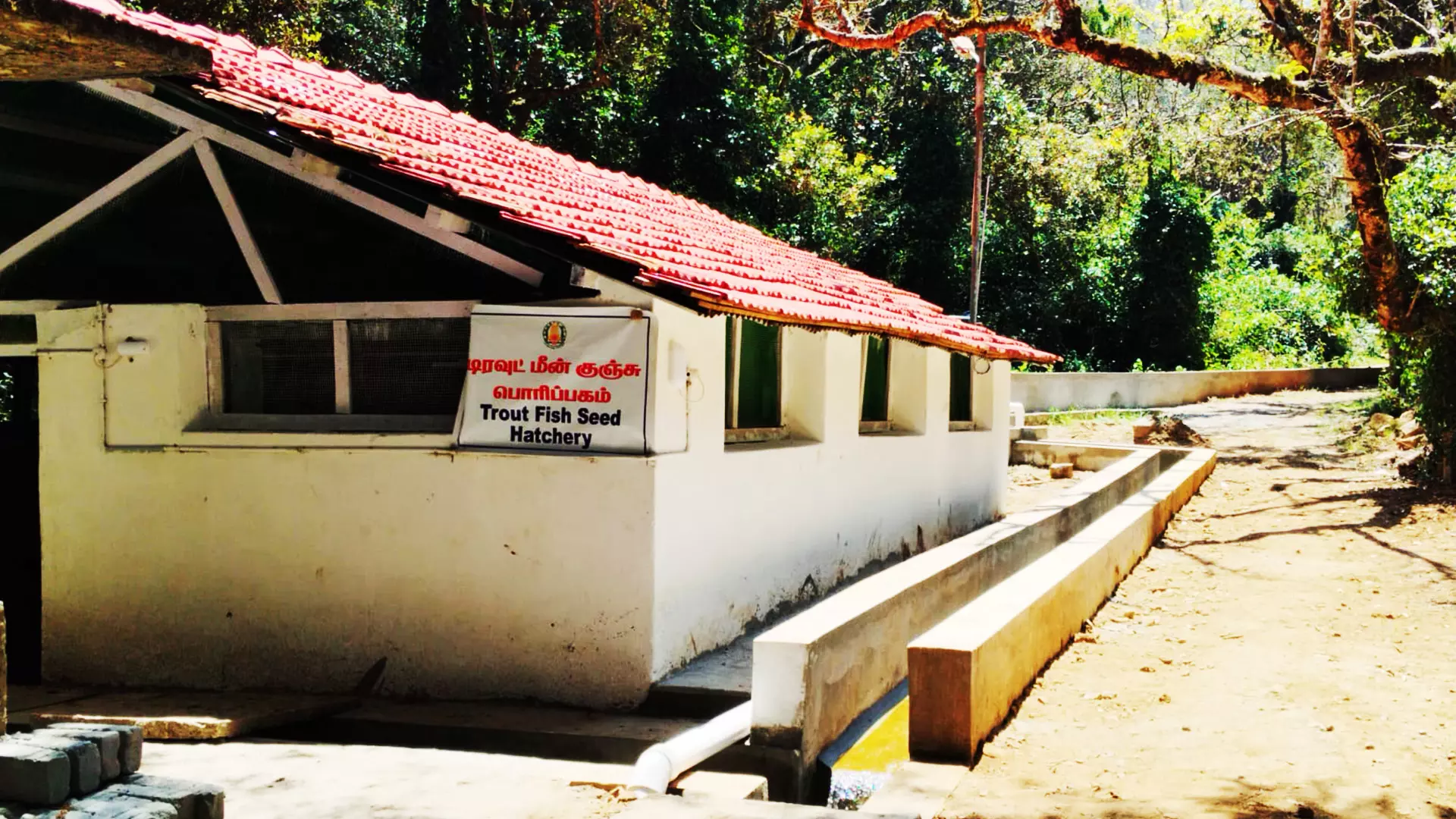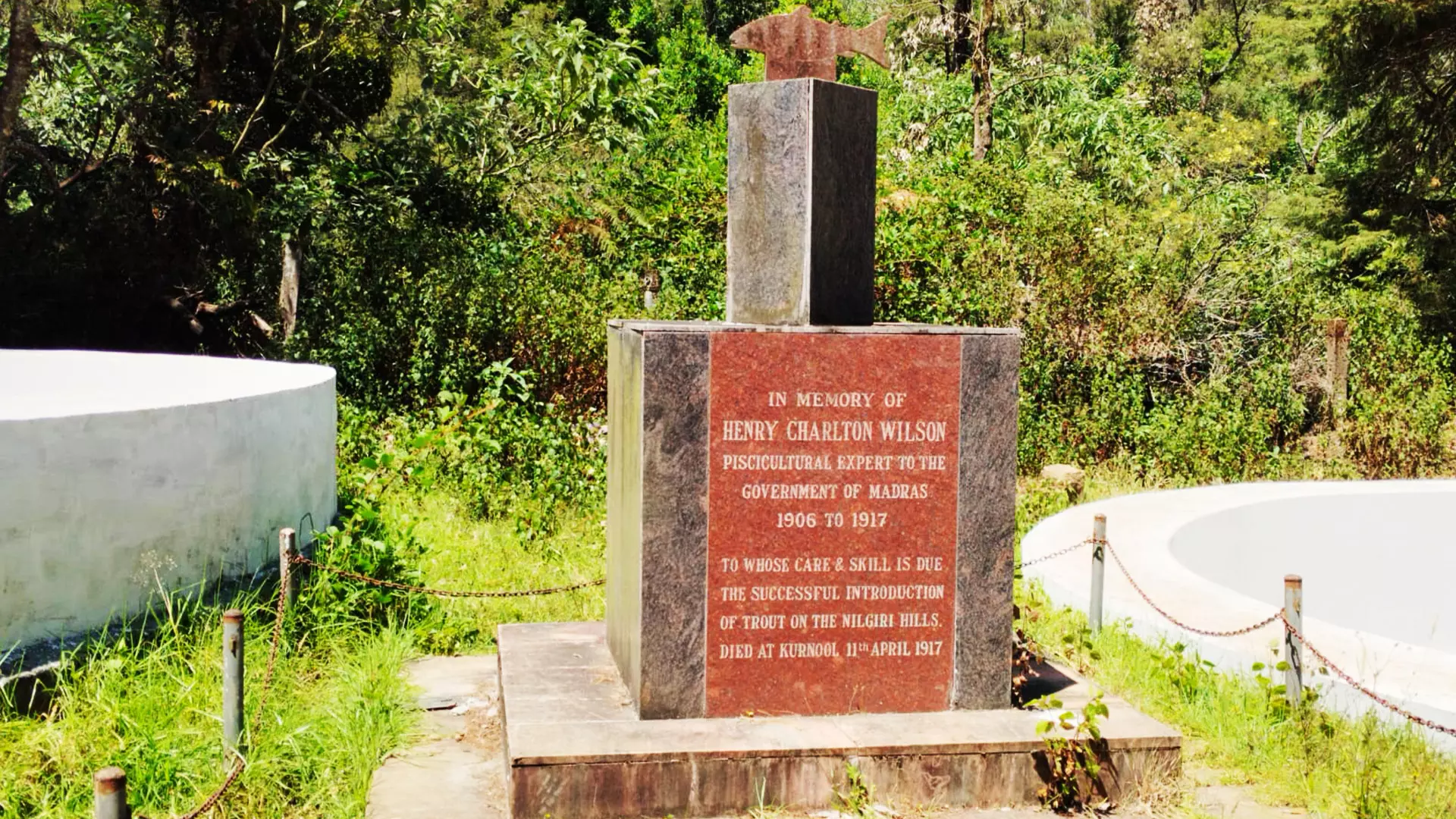
- Home
- India
- World
- Premium
- THE FEDERAL SPECIAL
- Analysis
- States
- Perspective
- Videos
- Sports
- Education
- Entertainment
- Elections
- Features
- Health
- Business
- Series
- In memoriam: Sheikh Mujibur Rahman
- Bishnoi's Men
- NEET TANGLE
- Economy Series
- Earth Day
- Kashmir’s Frozen Turbulence
- India@75
- The legend of Ramjanmabhoomi
- Liberalisation@30
- How to tame a dragon
- Celebrating biodiversity
- Farm Matters
- 50 days of solitude
- Bringing Migrants Home
- Budget 2020
- Jharkhand Votes
- The Federal Investigates
- The Federal Impact
- Vanishing Sand
- Gandhi @ 150
- Andhra Today
- Field report
- Operation Gulmarg
- Pandemic @1 Mn in India
- The Federal Year-End
- The Zero Year
- Science
- Brand studio
- Newsletter
- Elections 2024
- Events
The Scottish trout fish and the mystery of a ‘lake gone missing’ in Ooty

Tamil Nadu has spent Rs 2 crore this year to conserve a breed of trout fish, whose association with the state goes back to the 1800s, in Ooty.Interestingly, the fish, Tamil Nadu is trying to preserve today originally thrived in Scotland’s Burnfoot Reservoir, and made its way to the hilltop town of Ooty in the Nilgiris during the British regime. The lake in Ooty where the trout fish was...
Tamil Nadu has spent Rs 2 crore this year to conserve a breed of trout fish, whose association with the state goes back to the 1800s, in Ooty.
Interestingly, the fish, Tamil Nadu is trying to preserve today originally thrived in Scotland’s Burnfoot Reservoir, and made its way to the hilltop town of Ooty in the Nilgiris during the British regime.
The lake in Ooty where the trout fish was bred has, however, now turned into a farmland, yet the fish has managed to survive over the years.

The farmland where Burnfoot Lake once was.
Attempts to introduce trouts to Ooty started in the early 1800s. It all began with the British settlers in Ooty longing for the Scottish trout fish. They sought to recreate their angling experience and taste the fish they dearly missed from their homeland.
They even went to the extent of naming the waterbody in Ooty where the fish was introduced as Burnfoot Lake. But the current status of the Burnfoot Lake is ‘Missing/not found in government records’.
Officials from the Department of Fisheries in Tamil Nadu have confirmed that close to one lakh fingerlings of trout are released every year to boost the population.
“Trout fish doesn’t survive in other parts of southern India. Even in the north, we can find it only in some parts of Himachal Pradesh and Kashmir. We are making serious efforts to preserve this species as it represents a historic event that occurred some 200 years ago,” said Jothi Laxmanan, assistant director of the Fisheries Department in Nilgiris.
The lake has been extensively mentioned in several letters gathered by the Nilgiri Documentation Centre (NDC) that detail the attempts by various British men to introduce trout in Ooty.
“The first attempt to introduce trout in the Nilgiris was made by Dr Francis Day in 1863. He was a fisheries expert. But the trout ova sent from England perished even before it could reach Sri Lanka. In 1866, Day imported another 6,000 ova taking utmost precaution. The ova were packed in nine tonnes of ice in the ship journey, then carried in train and shifted to a special hatchery in the government gardens. Though 80 per cent of the ova initially survived, within the next few days all died,” explains Venugopal Dharmalingam, honorary director of NDC.

The Trout Fish Seed hatchery.
Later in 1906 Henry Charlton Wilson, a pisciculture expert, studied the entire Nilgiris district and spotted Avalanche stream to be the best suited place to set up trout hatchery. A fresh batch of eyed ova was brought from New Zealand and hatched successfully, he said.
Followed by the hatchery initiative, the trout fish thrived in water bodies of Ooty but did not spread to other neighbouring areas as the climate was not conducive.
Books, photos as proof not enough?
Environmentalist G Janardhanan points out that a manmade water body, where the trout fish flourished, was named as Burnfoot so as to recall the name of the reservoir in Scotland where the fish was found aplenty.
“The original Burnfoot Lake still exists in Scotland and trout fish thrives there. While in India, the fish species survived over the years, we lost the lake due to unplanned urbanisation and agriculture expansion. If the issue of the disappearance of significant places like Burnfoot Lake is not attended to now, this would become an accepted practice in other protected areas as well. Many records and maps show the existence of the lake and how it acted as a connecting point for other water bodies,” he says.
The book Ootacamund, A history by Frederick Price has references to the trout fish and the Burnfoot Lake. There are several maps to prove the existence of the lake and the name of the area still being identified as Burnfoot is a testament to its past.
The lake has also been photographed by renowned lensmen ATW Penn, who has documented Nilgiris in its length and breadth than anyone else in the 18th century.
According to Penn’s records, the Burnfoot Lake was seen as a waterbody used to store water from the reservoirs on Tiger Hill. This information is also found in the Nilgiris gazetteer of 1908. As the landscape has changed over the years and government records of independent India had no records of the lake, the trout fish remains the only evidence of the lake’s existence, Janardhanan says.
But the administration claims that there are no official records of the water body.
Sources in the Nilgiris district administration told The Federal that the Burnfoot lake was not a recorded waterbody in revenue records after Independence.
“We could not find the lake in any revenue department records. It might have been encroached upon gradually. Some parts of the lake have become patta land and allotted as farmland for tribals now. But it cannot be sold to non-tribals. We act on complaints of encroachment when there are records. Even in this case, we are still checking whether there are any old revenue records to establish the existence of the lake. But only book references and photos are not enough to reclaim the lake area that existed during the British time,” said an officer on the condition of anonymity.
Why trout fish failed to flourish?
Here comes the question, why the trout did not flourish despite efforts spanning several years.
Environmentalist Mohan Raj offers an answer. He says the pollution in local water bodies and hydroelectric power projects being executed in 10 dams in Nilgiris district doesn’t allow the fish to flourish.
“Trout fish survive only in clean water. Since many lakes have been polluted in Ooty town, there are very few chances for trout to survive here. Fingerlings are introduced every year by the fisheries department in water bodies in reserved forest areas only,” he said.
The Tamil Nadu fisheries department has planned to bring in different varieties of trout fish from Kashmir to increase the population. “We also have plans to introduce private participation and pisciculture farms so that it will help in commercialising production and consumption in Nilgiris,” said Jothi Laxmanan, assistant director of Fisheries Department in Nilgiris.
He also added that currently, trout fish is not available for consumption in Tamil Nadu.
Missing lake a ‘bad omen’?
Many Toda tribal men and women of Nilgiris also recall the Burnfoot Lake that was situated close to the Toda settlement 'Thalayati Mund'.
Kashmund Devi of the Toda tribe, who is about to turn 70, recalls how her family used to take their herd of over 80 buffaloes to graze along the banks of the Burnfoot Lake. “I remember going to the Burnfoot Lake with my parents. We used to graze our buffaloes there till sunset. When our people switched to jobs other than grazing, we stopped visiting this lake. It was encroached in small parts and now it has become agricultural land. Many resorts have been built here. It’s painful to see this place which has no sign of how it used to be,” says Kashmund Devi.

The memorial tomb built for Henry Charlton in the Nilgiris.
Kashmund Devi says the loss of the Burnfoot water body sounds like an alarm for her. “Many grasslands and water bodies have disappeared now. Nilgiris is perceived completely as a tourist destination. Tribal people like us are living in a land which has been redesigned entirely for tourists. Burnfoot Lake is a stark example. It feels like a bad omen, for something worse to come, as our places are missing and we relate this with our disappearance from this blue hill,” she added.
